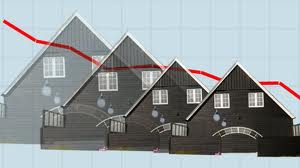 (TheNicheReport) -- This October will mark the fourth anniversary of the Home Affordable Modification Program (HAMP), which was enacted in haste by the George W. Bush administration and revamped months later by the Obama administration. The scope and intent of the program has been noble and ambitious from the start: to save between three and four million American homeowners from foreclosure.
(TheNicheReport) -- This October will mark the fourth anniversary of the Home Affordable Modification Program (HAMP), which was enacted in haste by the George W. Bush administration and revamped months later by the Obama administration. The scope and intent of the program has been noble and ambitious from the start: to save between three and four million American homeowners from foreclosure.
According to a recent paper presented by various economists and members of the Federal Reserve Bank and the U.S. Office of the Comptroller of the Currency (OCC), the impact of HAMP will be limited to about one third of its intended target. For the study, the research team looked at about 30 million mortgages in the U.S.
High Expectations
HAMP illustrates the struggle of implementing policy intervention with regard to debt renegotiation in a free market system. The paper, which is titled Policy Intervention in Debt Renegotiation: Evidence from the Home Affordable Modification Program, indicates that only about a million households will enter renegotiation -and some of the major mortgage lending and servicing institutions may be responsible for this.
Among some of the findings presented in the HAMP paper, the slow response from the some of the major financial institutions stands out. The mortgage lenders that actively responded had the capacity of doing so, but more than half of them lack the organization to implement HAMP. In essence, the government may have expected too much from the banks when it came to renegotiating with troubled borrowers.
The major banks have a considerable stake in the mortgage market; after all, they hold 75 percent of all home loans in the U.S. HAMP, however, unveiled a major discrepancy in the way they operate. Some banks were quick to reach out to borrowers and begin trial modifications that eventually became permanent, but other lenders did not see an incentive in HAMP and only achieved a 30 percent success rate in modifications.
Alternatives to HAMP
It may be tempting to label HAMP as a failure, but for about one million American homeowners it has become a lifeline that prevented the loss of their properties. In a macroeconomic sense, HAMP did not stave off falling home prices or mortgage defaults across the nation.
Like the First-time Homebuyers Tax Credit and other government initiatives to help the ailing housing market, HAMP may soon become an afterthought. The attention has now turned to the National Foreclosure Settlement program, which is under judicial monitoring. That agreement set aside $25 billion from five major lenders to write down the balances of principal mortgages, but so far that program has resulted mostly in short sales. This means that troubled borrowers are still losing their homes, but under less detrimental conditions.



